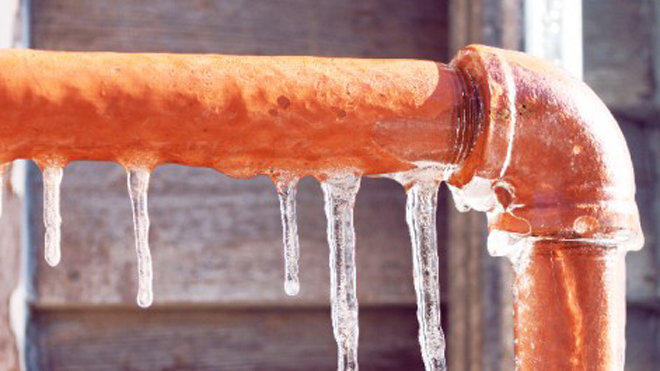Crucial Tips for Preventing Frozen Pipes in Cold Weather Seasons
Crucial Tips for Preventing Frozen Pipes in Cold Weather Seasons
Blog Article
Right here on the next paragraphs you might get a good deal of first-rate resources when it comes to Preventing and dealing with frozen pipes.

Cold weather can wreak havoc on your pipes, specifically by freezing pipes. Here's just how to prevent it from happening and what to do if it does.
Intro
As temperature levels decrease, the danger of icy pipelines increases, possibly causing costly fixings and water damage. Comprehending just how to stop frozen pipes is essential for property owners in cold climates.
Comprehending Frozen Pipelines
What triggers pipes to ice up?
Pipelines freeze when subjected to temperature levels below 32 ° F (0 ° C) for prolonged periods. As water inside the pipes ices up, it broadens, putting pressure on the pipe wall surfaces and possibly causing them to burst.
Dangers and problems
Frozen pipes can lead to supply of water interruptions, property damage, and expensive repair services. Burst pipelines can flood homes and trigger substantial structural damage.
Indicators of Frozen Pipeline
Identifying frozen pipes early can avoid them from bursting.
Exactly how to determine icy pipelines
Search for lowered water circulation from faucets, uncommon odors or noises from pipes, and noticeable frost on revealed pipelines.
Prevention Tips
Shielding susceptible pipes
Cover pipes in insulation sleeves or make use of warm tape to shield them from freezing temperature levels. Concentrate on pipelines in unheated or exterior areas of the home.
Heating strategies
Keep interior rooms effectively heated up, specifically locations with pipes. Open up cupboard doors to enable warm air to flow around pipelines under sinks.
Safeguarding Outdoor Pipes
Garden pipes and outdoor faucets
Separate and drain garden pipes prior to winter. Mount frost-proof faucets or cover outside faucets with protected caps.
What to Do If Your Pipelines Freeze
Immediate activities to take
If you suspect frozen pipes, keep taps available to alleviate stress as the ice melts. Use a hairdryer or towels soaked in hot water to thaw pipelines slowly.
Long-Term Solutions
Architectural modifications
Think about rerouting pipes away from outside wall surfaces or unheated areas. Add added insulation to attics, basements, and crawl spaces.
Updating insulation
Invest in high-grade insulation for pipes, attic rooms, and walls. Correct insulation helps keep constant temperatures and lowers the risk of icy pipelines.
Conclusion
Preventing frozen pipelines requires proactive measures and quick responses. By understanding the causes, indicators, and safety nets, house owners can safeguard their pipes during cold weather.
5 Ways to Prevent Frozen Pipes
Drain Outdoor Faucets and Disconnect Hoses
First, close the shut-off valve that controls the flow of water in the pipe to your outdoor faucet. Then, head outside to disconnect and drain your hose and open the outdoor faucet to allow the water to completely drain out of the line. Turn off the faucet when done. Finally, head back to the shut-off valve and drain the remaining water inside the pipe into a bucket or container. Additionally, if you have a home irrigation system, you should consider hiring an expert to clear the system of water each year.
Insulate Pipes
One of the best and most cost-effective methods for preventing frozen water pipes is to wrap your pipes with insulation. This is especially important for areas in your home that aren’t exposed to heat, such as an attic. We suggest using foam sleeves, which can typically be found at your local hardware store.
Keep Heat Running at 65
Your pipes are located inside your walls, and the temperature there is much colder than the rest of the house. To prevent your pipes from freezing, The Insurance Information Institute suggests that you keep your home heated to at least 65 degrees, even when traveling. You may want to invest in smart devices that can keep an eye on the temperature in your home while you’re away.
Leave Water Dripping
Moving water — even a small trickle — can prevent ice from forming inside your pipes. When freezing temps are imminent, start a drip of water from all faucets that serve exposed pipes. Leaving a few faucets running will also help relieve pressure inside the pipes and help prevent a rupture if the water inside freezes.
Open Cupboard Doors
Warm your kitchen and bathroom pipes by opening cupboards and vanities. You should also leave your interior doors ajar to help warm air circulate evenly throughout your home.
:strip_icc()/snow-outdoor-faucet-pipes-4af65d1e5e904fb1aa7bf74071fe5d89.jpg)
As a devoted reader about Winter Plumbing Precautions: Preventing Frozen Pipes, I thought sharing that information was necessary. Loved our write-up? Please share it. Let someone else discover it. Bless you for your time. Return soon.
Book Inspection Report this page